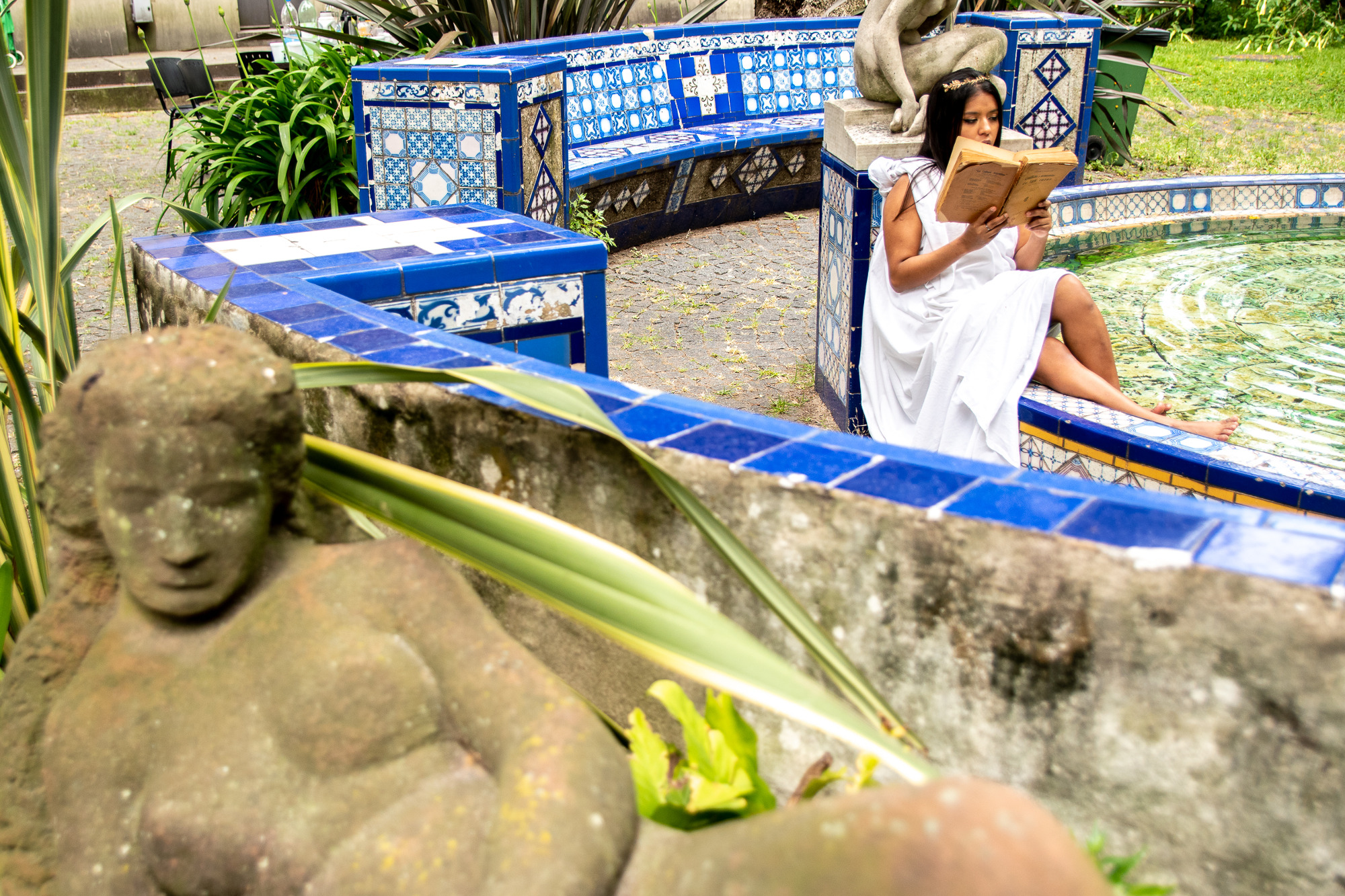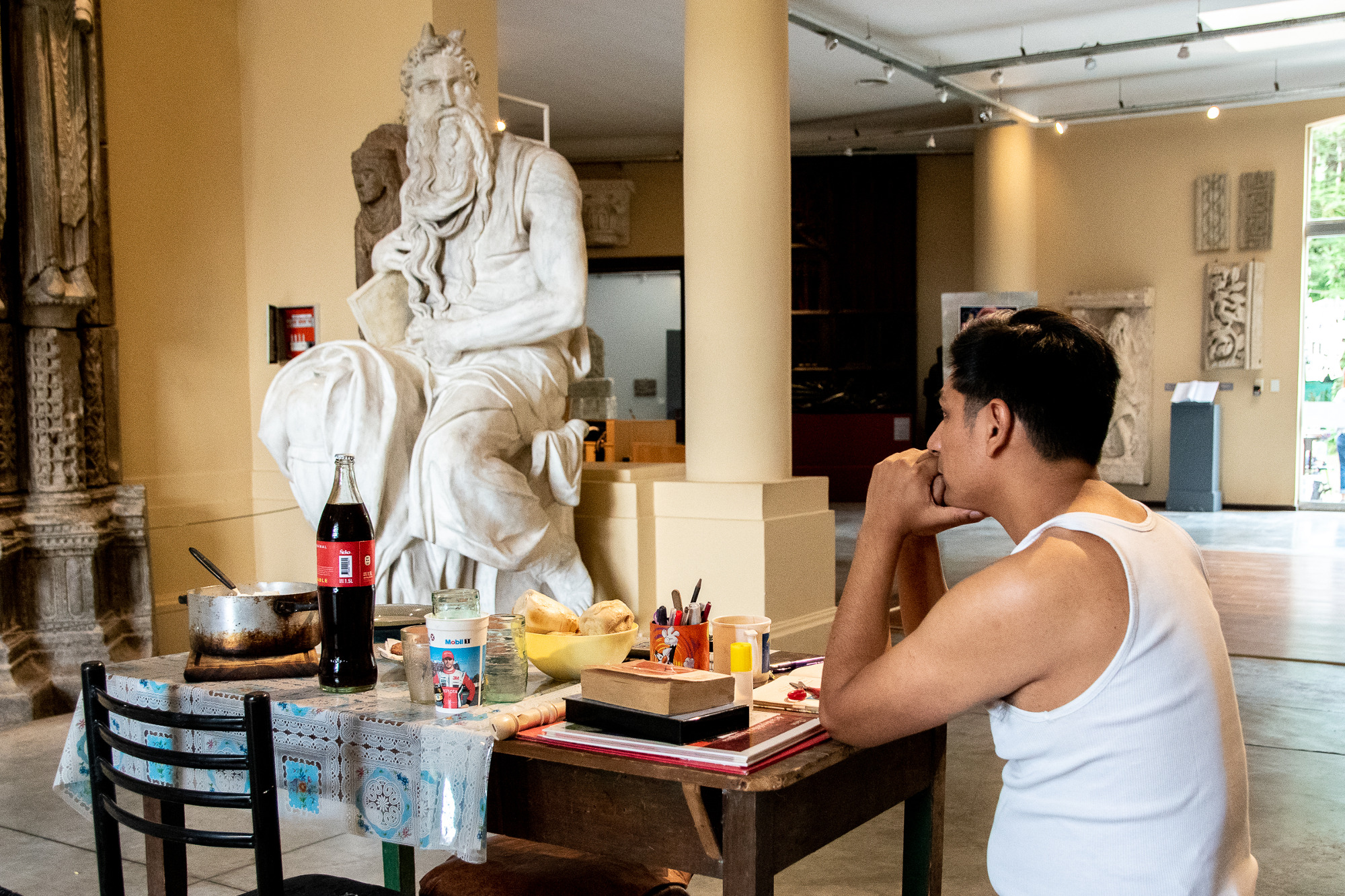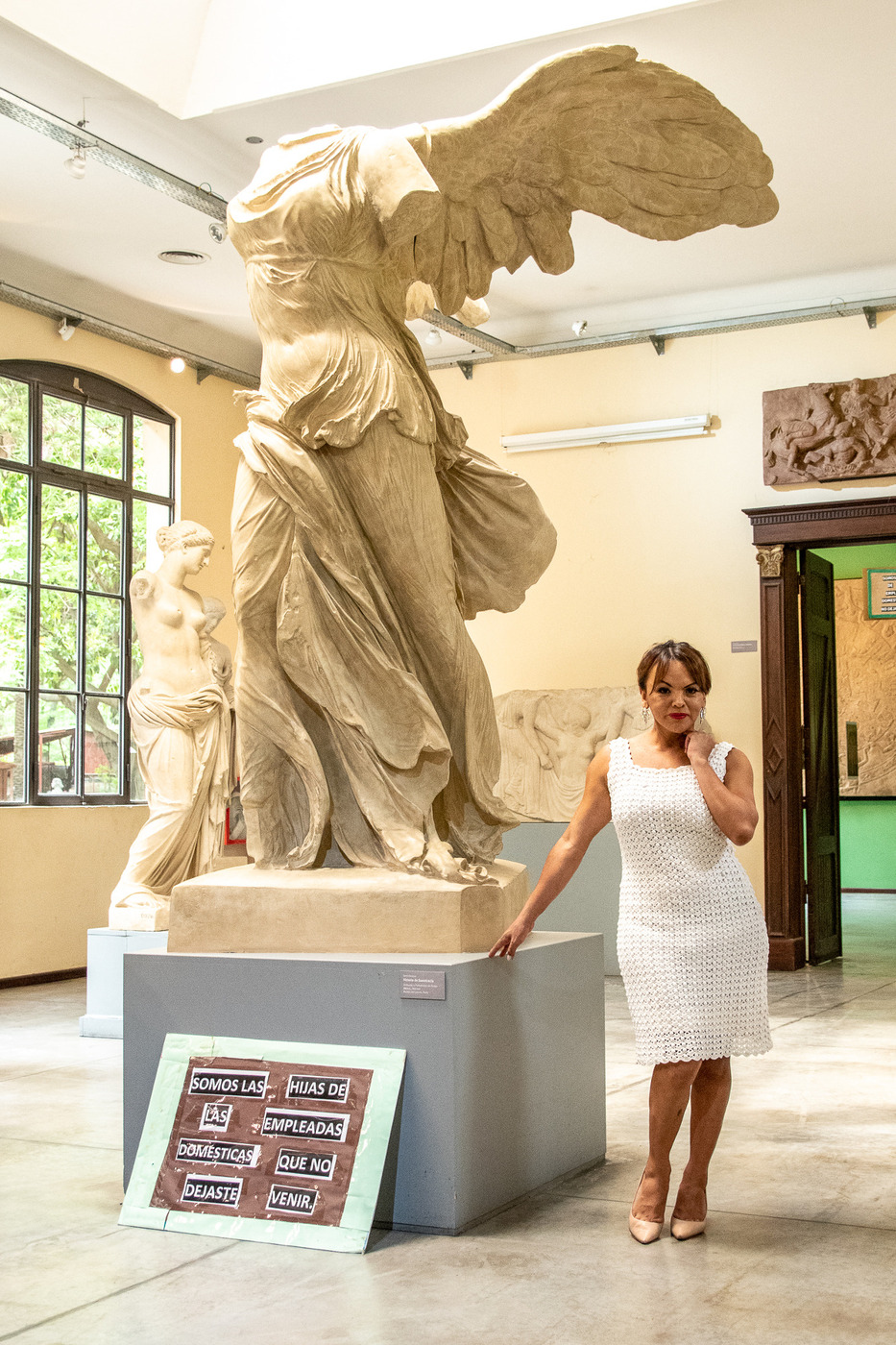Video Traspasar las Puertas de Cristal del Museo
Ana Vivaldi and Identidad Marrón
The following performances explore the disruptions generated by Marrón bodies in a white-European, Spanish-speaking space: a university museum. The Marrón bodies inside the room intervene in the world of art. They emphasise that structural racism is expressed as cultural and educational policy and materialised in the aesthetic sense that guides the "distribution of the sensible”. It is fundamentally a structure sensibilities, admiration and appreciation, a structure tensioned by Marrón bodies.

In these videos, we recreate and extend two performances written by David Gudiño and performed by him and Daniela Ruiz. For the videos, a new play written by Alejandro Mamani and performed by Rebe López was added, in which a question is presented as a continuation of the performances: The seeds? Who are the children of the inhabitants of the American continent? Where are they? What do they do? How do they walk and work? And especially, how did they survive? Where did those seeds germinate?
The disruptions generated by these three performances are not analogous. They are a direct critique of Western artistic heritage. The first, "La reina no querida" (The Unwanted Queen), by David Angel Gudiño, is performed by Daniela Ruiz. It critiques the prevailing colonialism of white European, Latin American, and Argentine art. The second, "Marrón", written and performed by David Gudiño, reflects the current violence against Marrón bodies. The last scene, "Racismo en español" (Racism in Spanish), challenges white notions of beauty, the limits of middle-class performative anti-racism, and the discomfort generated by a Marrón person who has the same cultural capital as Argentine white intellectuals.

The scenes challenge the idea of being “copies”. As Marrón people, we are political, thinking, desirable and, above all, contentious and playful subjects. We personify white people’s frustration at thinking of the Argentine nation as a defective copy or a poorly made clone of Europe. It is important to note that all the actors - Euge, Daniela, David, and Rebe - have experienced racism while auditioning for roles in theatre and television.

